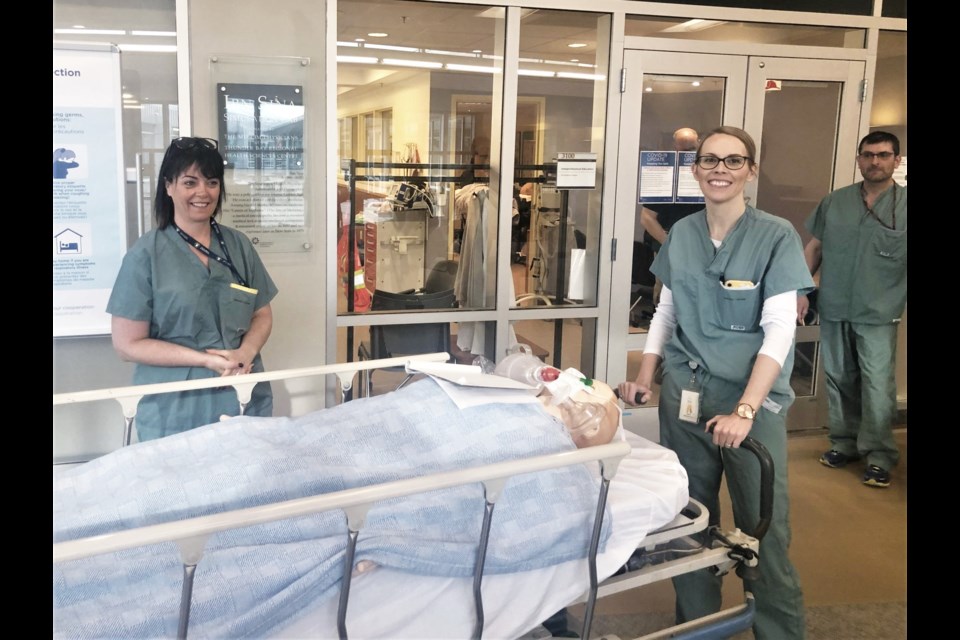THUNDER BAY – Responding to a growing number of cases in the region, the Thunder Bay Regional Health Sciences Centre opened a dedicated COVID-19 unit Monday.
The hospital converted its 3A surgical wing to create the new unit. It’s one of several “hot zones” where confirmed and suspected COVID-19 cases will be treated, with controls in place to minimize contact with other areas of the hospital.
The unit can accommodate up to 36 patients. Dr. Stewart Kennedy, who is heading the hospital’s COVID-19 response, said plans are in place to expand it if necessary – an outcome he considered likely. Those plans will go into effect if the unit hits 75 per cent capacity.
There were two patients in hospital with confirmed cases, and 28 with presumed cases, as of Monday afternoon. Any patient who is tested for the virus is considered a presumed case until results are received.
Many of those presumptive cases were admitted for pre-existing medical conditions such as pneumonia or COPD, Kennedy said, but needed to be tested after failing the hospital’s initial COVID-19 screening. That could mean they had two or more common symptoms of the virus, or recent contact with a confirmed case.
Staff working in the new unit will not work outside of the hot zones, and will operate with full personal protective equipment (PPE) at all times. Chief of Staff Dr. Zaki Ahmed said that precaution is key to avoid spreading the virus to other parts of the hospital.
“The whole point of having a COVID-19 unit is to really restrict who comes in and who goes out of that floor,” he said in a video update Sunday. “You don’t want to take the disease out of that unit, and at the same time you don’t want people coming in and possibly being infected.”
Hospital leadership acknowledged staff assigned to the unit had concerns, but expressed confidence in measures put in place to protect them.
“Certainly there were concerns from a number of staff, and rightly so,” said Kennedy. “We tried to address their concerns through questions and answer [sessions] and education.”
Those working the unit, from nurses to housekeeping and support staff, also ran through a number of simulation sessions, “right from the patient coming in through the ambulance bay all the way up to the ICU,” Ahmed said.
While the number of confirmed cases is expected to continue growing, Kennedy said he did not expect to see a massive surge like those experienced in Italy, Spain, or the United States.
“[Canada] actually got on this early, got into physical distancing early,” he said. “We are going to continue to see more cases, more spread. But I feel comfortable saying we’re going to avoid the surge – as long as the community stays vigilant.”
With warmer weather approaching, Kennedy reiterated the importance of maintaining physical distancing measures to contain the spread of the virus.
“We’re not out of the woods yet,” he said. “It’s ok to go out for short periods of time, but if you are going out for a walk you still have to maintain that two-metre distance – that is the key to prevent community spread.”
